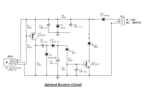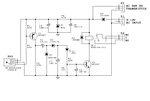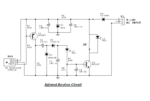- Joined
- Jan 22, 2008
- Messages
- 52,489
- Helped
- 14,756
- Reputation
- 29,794
- Reaction score
- 14,122
- Trophy points
- 1,393
- Location
- Bochum, Germany
- Activity points
- 298,383
The attached circuit is exactly implementing the said second (250 Hz) modulation at the transmitter side and can be expected to work good. But it hasn't much to do with the previously posted circuits in this thread.


